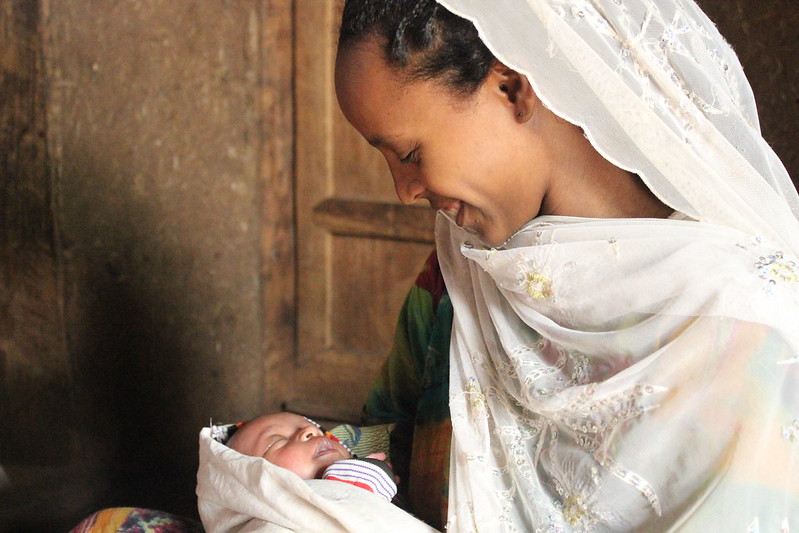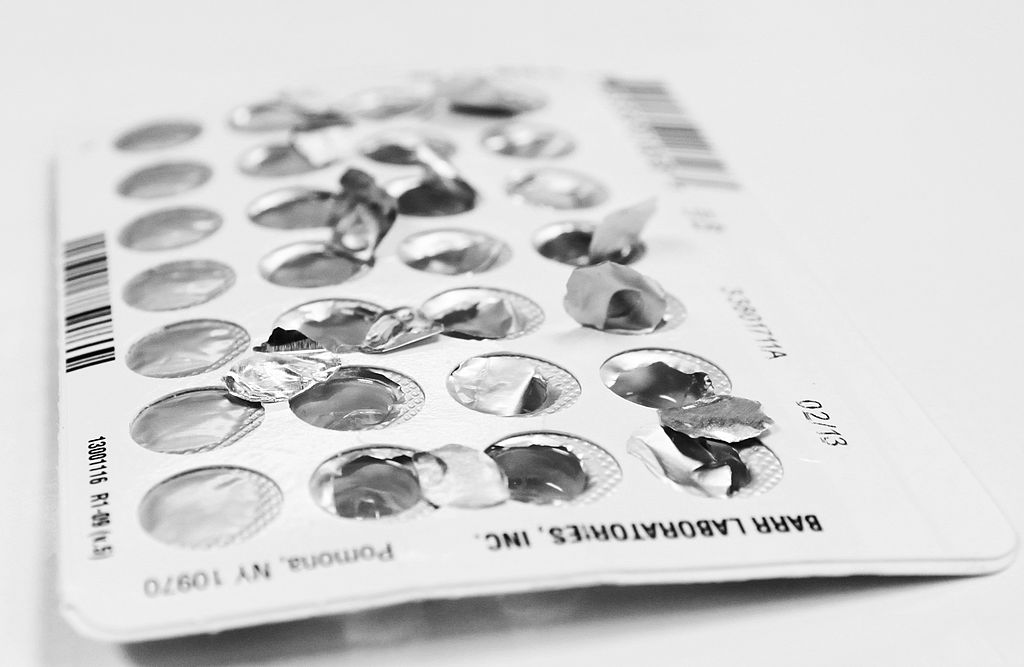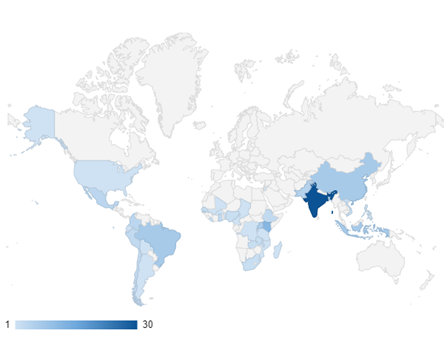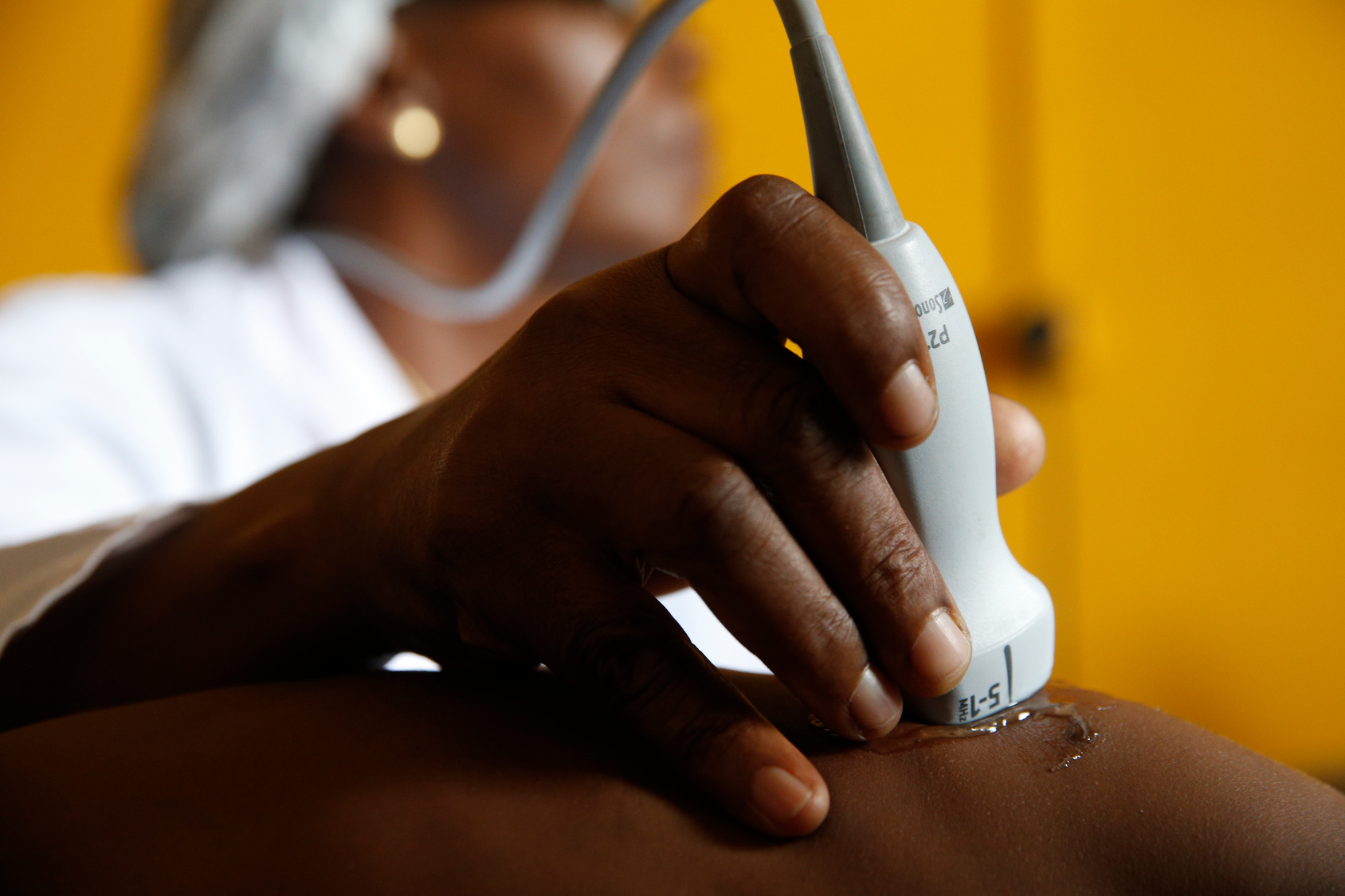Recommended
This piece is the sixth in the series “Episodes in the Life of an American, Woman, Development Economist.” Future episodes will be posted over the coming months.
To join the mailing list for future episodes, fill out this form or contact nancy'slife@cgdev.org.
Part I: 1968-1983
In the fall of 1968, when I was 22 and starting the second year of a two-year master’s program at the Johns Hopkins School of International Studies in Washington, DC, the man who would become my first husband told me about a college friend in New York needing $200 to help pay for an illegal but reasonably safe abortion for a woman he’d gotten pregnant. (She was going to Puerto Rico for the procedure, if I remember correctly.) My husband-to-be didn’t have $200 (worth about $1,000 today) to lend, nor did a third friend with a wife and a full-time job and a baby.
Abortion in 1968 was scary and costly; it was still illegal in many US states, including in New York (until 1970); the US Supreme Court was to make abortion a constitutional right in the Roe v. Wade decision only five years later, in 1973.
At the time, though not a virgin, I was not sexually active. I’d been raised a Catholic and gone to Catholic schools through college; I’d abandoned “The Church” during college because of the absurdity of a male unmarried pope being infallible on an issue like birth control—infallible meaning right no matter what when he speaks on an issue “ex cathedra,” from the chair.[1] I had acquired the good habit, in retrospect, of avoiding sex with men I liked but couldn’t imagine marrying. Sex was risky for women; that was the bottom line.
My husband-to-be’s story about a male friend’s dilemma was soon followed by his urging that I get myself on the contraceptive pill; the pill and other contraceptives were still technically illegal for unmarried women, but were widely available “for therapeutic purposes,” including “menstrual disorders.”[2] I went to a Planned Parenthood clinic just a 10-block walk from school on 7th Street NW in Washington, a key commercial corridor in a Black neighborhood that had been devastated by the riots following the assassination of Martin Luther King just months before. The building housing Planned Parenthood was fully intact; I was the only white patient or provider in the room; my wait was relatively short; the nurses were professional; the process was surprisingly straightforward.
As a relatively naïve young woman, I was lucky. I grew up with a good Catholic girl’s habit of avoiding dangerous sex; the reliable contraceptive pill was newly and easily available; and for my trip to Planned Parenthood, credit goes where credit is due—to my first husband. These together kept me safe at an odd moment in the long, sad story of unacknowledged and insecure reproductive rights for women in America—including, until the Roe decision in 1973, for women with whom I could easily identify.
Fast forward eight years to the fall of 1977. I was in my second year of Ph.D. studies in economics at Yale. By then I’d married that first husband, followed him to Brazil for his work, returned with him to Washington, and found my first real job (where I learned some economics and some population studies—see episode 2 in this series. I’d had a baby daughter (January 1973), gotten divorced (late 1974), and moved to New Haven, Connecticut (1975) with my then two-year-old.
In the preceding eight years, like most American women, I’d been on and then off the pill (which in those early days had much heavier doses of hormones, and was said to have a high incidence of side effects); and had used an IUD, but had the classic bleeding problem (50 years later its design is hugely improved). By the time I arrived at Yale as a single mother, I was relying on the less effective (and annoying to use) diaphragm, and in my second year there I got pregnant with a fellow student. It was the wrong guy at the wrong time. So I had an abortion, close by at the Yale Hospital. I had no doubts about doing so and the experience was, well, thankfully unmemorable—emotionally and physically.
In some ways I was today’s classic US abortion patient: a single mother. But I was far luckier. I was a Yale student on Yale insurance. I had an unintended pregnancy four years after the 1973 US Supreme Court decision that made abortion a right; abortion was legal, safe, and easily available in the state where I lived. It helped, of course, to be a student at an Eastern, liberal establishment university, where I was respected as a patient, with no questions asked.
Fast forward another six years, to 1983. I’d finished my PhD; met my second (and current) husband in New York (he had followed me to Washington, DC—on the economics of that look for a future episode); married him, and at age 36, had a second daughter. I was working as a junior economist in the Population and Health Division of the research department at the World Bank—a great job with limited travel for a new mother. While pregnant I’d taken a leave of absence to teach for several months in Dijon, France, with my first daughter (nine years old) coming with me. I’d had several papers published in top journals; I was collaborating on a research project on the effect of user fees on families’ demand for social services in rural Mali,[3] and I’d had the chance to work on setting up evaluation of World Bank lending operations on education in the Philippines and on nutrition in India.
Life was full and rewarding. Looking back, how lucky I was to manage so easily the intersection of study, motherhood, and rewarding work in the 1970s and 1980s: finishing a PhD, moving back to Washington and marrying husband #2, working and publishing and traveling some but not too much at the World Bank, and having a fully planned second pregnancy (and a third—a son born when I was 40) on a schedule I chose with my husband.
At the time, in 1983, I didn’t think of that luck as being about my having enjoyed what we now call reproductive “rights,” nor the direct connection of those rights to my good job at the World Bank—my economic empowerment. I knew and rued that too many women in developing countries had limited access to reproductive health services. But I didn’t make a connection to their lack of a more fundamental right: the right to make choices about whether and when to have children—a right that many of them still do not have, 40 years later. I took for granted what is called “agency” in the literature on women’s roles and empowerment: knowing I had the right to choose or not—in this case childbearing -- and having the ability and the means to make my own choice.[4]
I took then the agency I had and my resulting economic empowerment—combining rewarding work and motherhood— completely for granted.
******
Part II: 1983-84
With the Reagan administration taking office in 1981, Robert McNamara, the World Bank president, had resigned, and his successor, A.W. “Tom” Clausen (a former top man at the Bank of America) had named a new chief economist, Anne Krueger. At the time, Krueger was probably the most well-regarded woman in the profession due to her top-notch work on international trade.[5] As chief economist she inherited responsibility for the World Bank’s upcoming sixth annual World Development Report (WDR), the Bank’s signature annual publication on a development topic. The 1984 topic, agreed under McNamara, with his deep concern about the role of rapid population growth on development progress in poor countries, was to be the World Bank’s contribution to the fourth decennial United Nations conference on Population and Development to be held in Mexico City.
Looking for someone to lead preparation of that report, a subject far afield from her own work, Krueger called her former faculty colleague in the economics department at the University of Minnesota, T. Paul Schultz,[6] prominent for his work on population, fertility, and health in developing countries, who was by then at Yale. My career luck struck again; Schultz had been my dissertation advisor at Yale. He suggested my name, and Krueger offered me the job. She told me she could not be sure the powers-that-be inside the World Bank would agree to my appointment to the major, visible 15-month task; I was, after all, a junior economist and the prior World Development Reports had been led by senior staff or well-known outside economists.[7]
Krueger got her choice; perhaps she invoked those academic publications of mine, or more likely, a well-received background paper I’d done on population for the 1980 World Development Report on poverty and human development. Perhaps she didn’t need to argue. One way or another, I got the special appointment.[8]
I had a budget for the 15-month assignment to complete the report: to put together a team of staff from inside the Bank, to hire outside experts on key topics to write background papers, and for the editing and publication of a final product. I don’t remember the budget being a constraint; what seemed a constraint was that my junior status and short tenure (four years) inside the Bank, and in research not operations, made it hard to recruit well-respected Bank senior economists with operational experience. In fact that may have been a blessing. I ended up with a dedicated team of less well known inside the Bank but especially research-savvy economists, a top demographer, and a couple of young women and a young man whose subsequent careers fully validated my choices.[9]
The report was published in late spring of 1984 and in July I was headed for Mexico City, where I would do a presentation of the report followed by a press conference featuring its findings with the president of the World Bank. My new husband was coming on the trip; our 2-year-old and the now- 11-year-old who had accompanied me to Yale would stay with my sister and their cousins at the beach for the three or four days we would be away. I was proud of the report, pleased to be meeting Mr. Clausen<[10] (he was nice as could be)—and a bit nervous about the press conference.
But the air went out of my balloon when the new Reagan administration announced a policy, now known as the “Mexico City global gag rule.” In order to receive US financial support, the new policy required foreign NGOs[11] (nongovernmental organizations) providing health and family planning services in developing countries to certify annually that they were not providing abortion services, nor counselling women about abortion, nor advocating decriminalization of abortion. This new gag rule would apply even were they to use other sources of funds to provide abortion and abortion-related services and counselling.[12]
We and I being an American, should have seen it coming. In 1976, as part of the backlash to the 1973 Roe decision, a Republican Congress had passed the Hyde Amendment, which to this day prohibits use of any federal funds, including Medicaid (the US health insurance program for the poor) for abortion. That was and is discriminatory against poor women who depend on Medicaid—many of whom come from the Black and other non-white communities.
But we made no mention of the Hyde Amendment in the 1984 World Development Report. The focus in the WDR was on “population” policies and family planning programs—not on reproductive rights, and certainly not on US policies on family planning, abortion, and other reproductive services. (This was 15 years before the founding of the Center for Global Development with a determined focus on rich-world policies that matter for developing countries – see episode 5.) Now I remember being horrified by a brief reference we made to Romania: abortions there had been the most common form of family planning until 1966, but were then restricted because the authorities wanted an increase in population growth. As a result, by 1977 maternal mortality had tripled due to unsafe abortions.[13] In China I knew it was the opposite form of abuse: the one-child policy, heavily enforced starting in 1980, meant rural women were sometimes forced into abortion and sterilization by local authorities.
I was horrified by what the government imposition of rules to increase or decrease their population growth meant for women in Romania and China. But I failed to notice that the US gag rule amounted to the same deprivation of the rights of millions of women in the developing world dependent on US foreign assistance: to choose or not to maintain a pregnancy.
Since 1984, the Mexico City gag rule (an executive order), unlike the Hyde Amendment (a law), has been revoked by each subsequent Democratic administration and reinstated by each successive Republican administration, making millions of women in developing countries victims of the politicization of the practice of reproductive health.[14] Economists’ studies, using the unfortunate natural experiment of unsafe abortions and maternal deaths across periods with and without the Mexico City policy extant, show convincingly that during the latter periods, the policy has had the (predictable) effect of increasing unsafe abortions and resulting rates of maternal mortality in countries otherwise benefiting from US foreign aid.[15]
With the loss of family planning services and access to contraceptives, unintended pregnancies inevitably increase; that is deadly in itself since “pregnancy itself kills”—and especially in developing countries, where maternal mortality rates are 10 times higher than in the United States (and US rates are two to five times higher than in Western Europe).[16] And to add insult to injury, by reducing women’s access to information about sexually transmitted disease, the Mexico City gag rule has been linked to higher incidence rates of HIV for women and their babies.[17]
Like the Hyde Amendment, the Mexico City gag rule hurts poor women most. In developing countries, where poverty in general is higher, the resort to unsafe abortions when the gag rule is in effect is terrifying.[18] Not all unsafe abortions in the developing world can be blamed directly on the Mexico City policy—and yet in a sense they can; when a rich and powerful democracy directly and purposively targets the reproductive rights of poor women abroad, it lends unwarranted credibility to other countries’ policies that do the same, putting at risk rights that ought to globally recognized.
Cynics might say the gag rule merely withdraws a benefit that US taxpayers had been providing, and so is neutral, amounting not to outright harm but merely the withdrawal of a benefit. For me, the harm is more fundamental. It is a terrible reminder that unequal rights are closely tied to unequal economic privilege, among as well as within countries.
I was proud in 1984 that the chapter in the World Development Report on family planning was titled “Family Planning as a Service”—that is as a service critical to the health of mothers and their children, rather than as principally a means to reduce fertility and population growth in developing countries.[19]
But in retrospect that was not enough. We failed to emphasize family planning and other reproductive services as fundamentally about women’s rights and roles in societies, and about those rights as central to women’s economic empowerment[20]; in that sense the report, even as it was published, was behind the times, failing to reflect the oncoming feminist movement that was insisting, correctly, that reproductive rights are fundamental to women’s economic empowerment.
As the leader of the team that prepared the WDR 1984, I wish I had made the connection between the full exercise of reproductive rights I had enjoyed, and my success in the working world.
Ten years later, at the next decennial conference on population and development, in Cairo, in 1994, women fought for and won a new definition of “population policy” that omitted entirely the word “population” and instead gave prominence to “reproductive health and the empowerment of women.”[21]
I have been lucky not only to have been “born in America,” but as a woman, to be born just in time (in the fifth week of the US 16-year baby boom) to benefit from the wide availability of the new contraceptive pill in the mid-to-late 1960s, and the Roe decision in 1973. It is a luck shared with my baby boomer sisters in the US. It is the reproductive rights I enjoyed in the first several decades of my adult that made it possible for me to enjoy the choices that most men still take for granted: choices that enabled an empowering combination of career and parenting. My luck is in disturbing contrast to the great majority of women around the world for whom reproductive rights and reproductive justice are still elusive and where they do exist, still fragile[22]—now, again, even in America.
So I find myself worrying that my granddaughters and the granddaughters of colleagues and friends in the developing world will not enjoy the reproductive rights that empowered me in my reproductive years. Born in America at the right time, I took them for granted until this year. Now those rights feel fragile here and everywhere.
Comments welcome.
Email me at nancy'slife@cgdev.org if you wish to be added to a mailing list for future episodes.
Find me on Twitter: @nancymbirdsall
[1] On checking the year when a Pope spoke ex cathedra (Humanae Vitae) prohibiting use of artificial contraception, I learned to my astonishment it was only in 1968, after I had finished college, that Pope Paul VI did so, rejecting the views of a majority of the members of a 1963-66 Pontifical Commission on Birth Control; some argue he did so for fear of the Church losing face after decades of negative statements on the use of birth control in the modern era. https://theconversation.com/how-the-catholic-church-came-to-oppose-birth-control-95694
[2] An excellent timeline on contraceptive use in the US is here.
[3] The paper reports on our estimates of the price elasticity of families’ demand for rural schooling as a function of fees, distance from home, and measures of school quality .The resulting 1996 publication is: “Demand for Primary Schooling in Mali: Should User Fees Be Increased?”, Education Economics, Vol. 14 (4), with Francois Orivel. While I was still at the World Bank and reporting to Larry Summers, then chief economist, he teased me mercilessly for being a neo-liberal, since the paper showed parents would willingly pay for schoolbooks in schools where public spending was so limited that schools had few or no books at all.
[4] “The ability to make choices and act upon them.” Mayra Buvinic explains this definition here. She cites Amartya Sen (1985, 1999), who “in his seminal work on development and freedom, first drew attention to women’s agency (the ability to act and effect change in spheres that are important to the individual) and the importance of women’s role as agents, who act and bring about change, shifting [away from] the overall focus on women’s well-being (women as patients) prevailing at the time.”
[5] Note that not only the president of the World Bank but by tradition the chief economist were both US citizens. See episode 4 on my “exorbitant privilege,” like theirs, as an American in being appointed as executive vice-president of the Inter-American Development Bank, also a position reserved for an American until recently, when the custom was upset, oddly, with the election of an American to be president of the IADB.
[6] T. Paul Schultz is the son of T. W. Schultz; the latter’s work on agriculture taught me the key lesson in economics that incentives matter, as he showed for poor farmers, when studying for a Master’s degree; see episode 2.
[7] This would happen again eight years later, when Larry Summers came to the Bank as Chief Economist and offered me a big promotion – episode 4. So it was two outside chief economists rather than inside World Bank senior bureaucrats who furthered my career inside the Bank—perhaps a coincidence, perhaps not.
[8] In episode 2, I note that women too often invoke luck for their success, while men invoke competence and ambition. I don’t like to be typical of that pattern, but it was indeed luck that Krueger called Schultz! As it turned out by the time of this 1999 article in World Development, I was one of five women including Anne Krueger named as eminent in the field of development economics. Krueger getting the okay to name me to head the 1984 World Development Report may well have contributed to my inclusion 16 years later. The other three named were Irma Adelman, Alice Amsden, and Frances Stewart.
[9] The team members were Martha Ainsworth, Jill Armstrong, Rodolfo (Randy) Bulatao, Dennis Mahar, William McGreevey, Nicholas Prescott (now deceased), and Gurushri Swamy. They worked on the main part of the report on population and development. Martin Wolf edited the section of the report included every year on the global economy, for which I was responsible (I remember a big issue was the future price of oil). Rupert Pennant-Rea was the overall editor.
[10] The new president was A.W. “Tom” Clausen; he retired as president at the end of his five-year term and was asked to return to the Bank of America, which he did. He died in 2013 at age 89.
[11] Originally the gag rule applied to US NGOs as well. US court rulings in 1987 and 1988 led to the policy applying only to foreign NGOs. This Wikipedia link provides an excellent history.
[12] The Trump administration added the requirement for all NGOs providing any health services beyond family planning, including for HIV/AIDS patients. Should future Republican administrations reinstate the gag rule using the Trump executive order, it would be needlessly cruel and costly for women in the poorest countries most dependent on US-funded health services.
[13] Page 157 of the 1984 WDR report.
[14] Slides 11 and 12 in this PowerPoint presentation.
[15] For example, Brooks, Benavit, and Miller. Grant Miller is a non-resident fellow at CGD. This Wikipedia piece includes references to other studies, including others with Miller as a co-author.
[16] More than 90 percent of all maternal deaths occur in developing countries. The maternal mortality rate is five to nine times higher in West and Central Africa than in the US; and two or three times higher in the US than in Western Europe. See this UNICEF map. In the United States, Black women suffer especially high rates of maternal mortality, and not only because they are on average poorer; other factors include systematically higher levels of stress. See this article.
[17] One estimate is that the US gag rule when in force has led to an estimated 80,000 additional HIV/AIDS infections annually. See here.
[18] An estimated 97 percent of unsafe abortions are now performed in developing countries: Bendavid, Avila, & Miller, 2011; Jones, 2011, both cited in the Wikipedia link above.
[19] A discussion of the benefits of support for family planning in poor countries is almost certainly what Mr. McNamara had in mind when the decision was made for the World Bank to do the World Development Report in 1984 as a contribution to the UN Conference on Population and Development.
[20] There is a short statement in the WDR (p. 127) noting that family planning “enlarges the choices available to people . . .particularly true for women …”. The word “empowerment” in relation to women does not appear anywhere in the report as far as I remember. For work on women’s empowerment and gender equality in developing countries, go here: https://www.cgdev.org/project/womens-economic-empowerment-wee-measurement-learning-collaborative; here https://www.cgdev.org/event/third-annual-birdsall-house-conference-women-reproductive-choices-life-chances-links-between; and to these sites of the African Population and Health Research Center; International Center for Research on Women, and of IFPRI.
[21] “The Conference adopted the Programme of Action by consensus, which emphasized the fundamental role of women’s interests in population matters and introduced the concepts of sexual and reproductive health and reproductive rights. A new definition of population policy was advanced, giving prominence to reproductive health and the empowerment of women.” https://www.unfpa.org/events/international-conference-population-and-development-icpd. For the full story of how that happened, see The Cairo Conference on Population and Development: A New Paradigm? Author(s): C. Alison McIntosh and Jason L. Finkle Source: Population and Development Review , Jun., 1995, Vol. 21, No. 2 (Jun., 1995), pp. 223-260 Published by: Population Council.
[22] On family planning and women’s empowerment as they apply in developing countries, the papers in this conference are a good start. See also endnote 19.
Rights & Permissions
You may use and disseminate CGD’s publications under these conditions.







